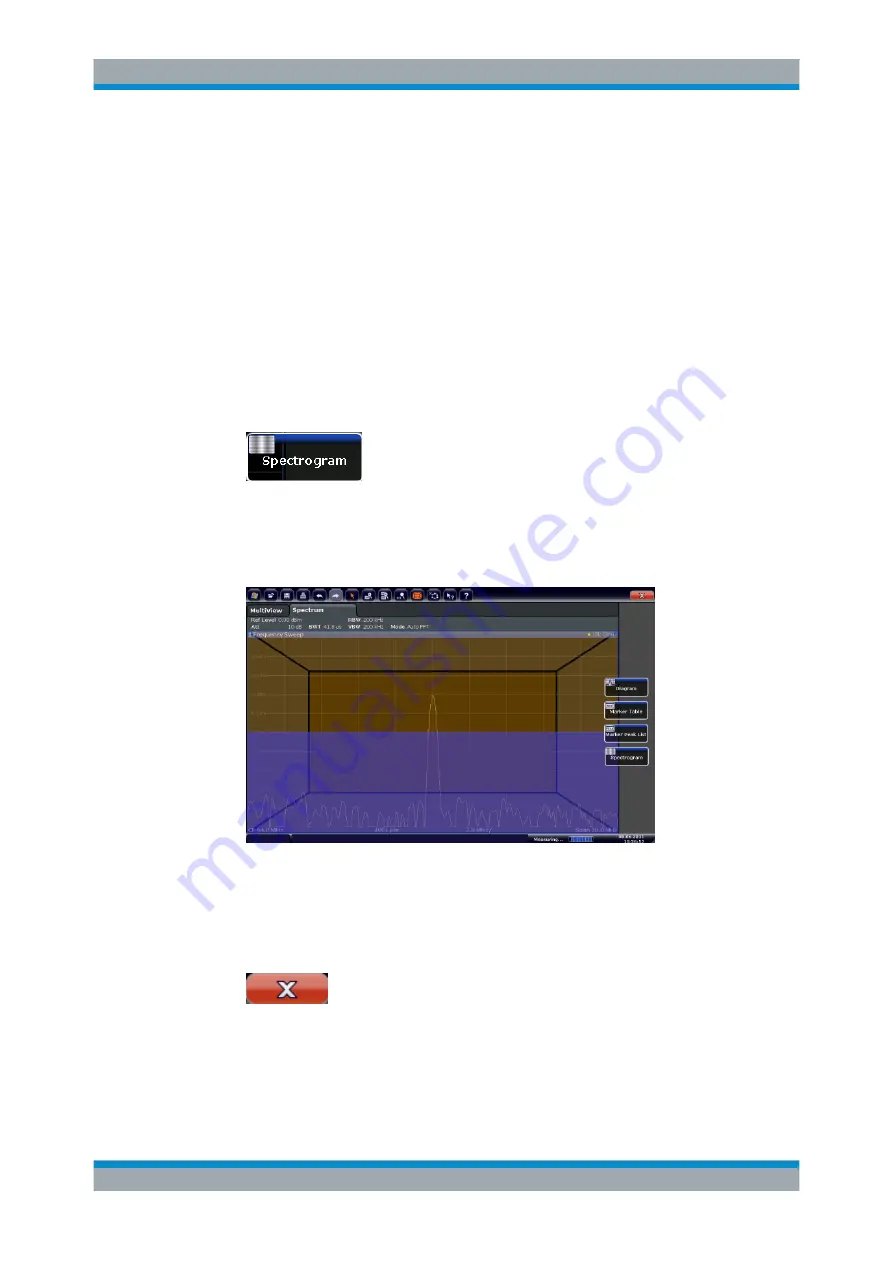
Getting Started
R&S
®
FSW
61
User Manual 1173.9411.02 ─ 19
3.3.2 Displaying a Spectrogram
In addition to the standard "level versus frequency" spectrum display, the R&S
FSW
also provides a spectrogram display of the measured data. A spectrogram shows how
the spectral density of a signal varies over time. The x-axis shows the frequency, the y-
axis shows the time. A third dimension, the power level, is indicated by different colors.
Thus you can see how the strength of the signal varies over time for different frequen-
cies.
1. Tap the "Overview" softkey to display the general configuration dialog box.
2. Tap the "Display Config" button.
The SmartGrid mode is activated, and the evaluation bar with the available evalua-
tion methods is displayed.
3.
Drag the "Spectrogram" icon from the evaluation bar to the diagram area. The blue
area indicates that the new diagram would replace the previous spectrum display.
Since we do not want to replace the spectrum, drag the icon to the lower half of the
display to add an additional window instead.
Fig. 3-6: Adding a Spectrogram to the display
Drop the icon.
4. Close the SmartGrid mode by tapping the "Close" icon at the top right corner of the
toolbar.
You see the spectrogram compared to the standard spectrum display. Since the
calibration signal does not change over time, the color of the frequency levels does
not change over time, i.e. vertically. The legend at the top of the spectrogram win-
dow describes the power levels the colors represent.
Trying Out the Instrument






























